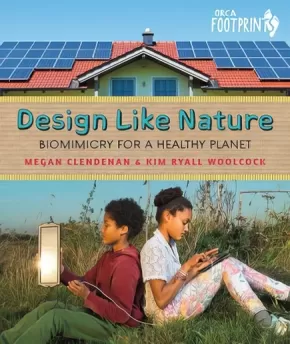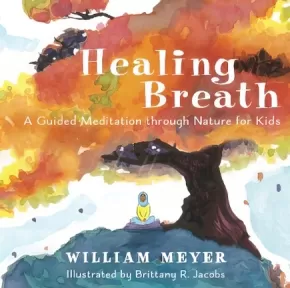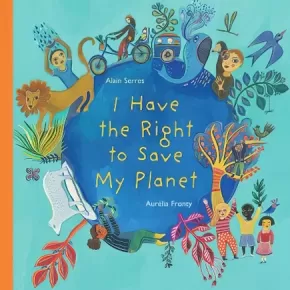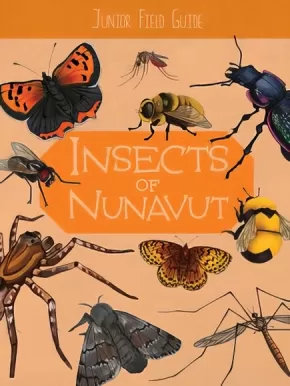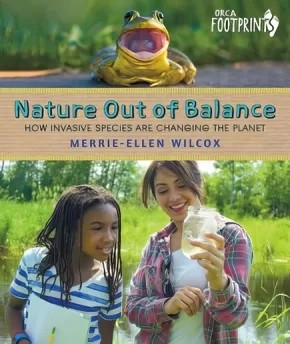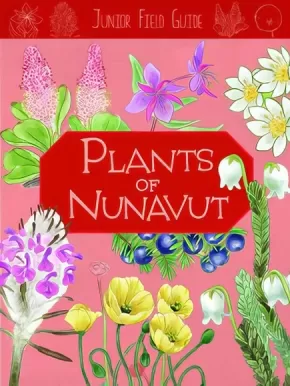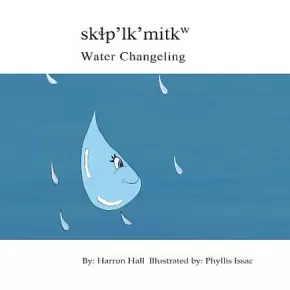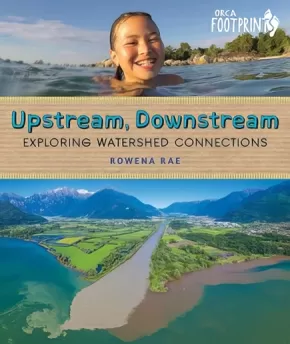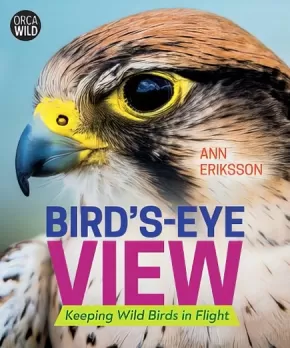
Environment
91
-
105
of
188 Results;
Sort By
Go To
of 13
Beavers: Radical Rodents and Ecosystem Engineers
$24.95
Format:
Hardcover
ISBN / Barcode: 9781459824690
Synopsis:
Synopsis:
By cutting trees and building dams, beavers shape landscapes and provide valuable wetland homes for many plants and animals. These radical rodents were once almost hunted to extinction for their prized fur, but today we are building a new relationship with them, and our appreciation of the benefits they offer as habitat creators and water stewards is growing. Packed with facts and personal stories, this book looks at the beaver’s biology and behavior and illuminates its vital role as a keystone species. The beaver’s comeback is one of North America’s greatest conservation success stories and Beavers: Radical Rodents and Ecosystem Engineers introduces readers to the conservationists, scientists and young people who are working to build a better future for our furry friends.
Educator & Series Information
This book is part of the Orca Wild series that examines the intricacies of animals, ecosystems, humans and our relationships to each other.
Recommended for ages 9 to 12.
As beaver populations recover, conflicts between beavers and humans are increasing. This book offers practical solutions that are good for both beavers and humans.
Recent studies have highlighted the ability of beavers to help mitigate the effects of climate change, particularly drought, flooding and wildfires.
Beavers are fascinating animals with a high recognition factor (their buckteeth and flat tail are unmistakable) and beaver kits are irresistibly cute.
Additional Information
128 pages | 7.50" x 9.00"
Chasing Bats and Tracking Rats: Urban Ecology, Community Science, and How We Share Our Cities
$14.95
Artists:
Format:
Paperback
ISBN / Barcode: 9781773215396
Synopsis:
Synopsis:
Gripping narrative non-fiction with STEM and social justice themes that proves cities can be surprisingly wild places—and why understanding urban nature matters.
What can city bees tell us about climate change? How are we changing coyote behavior? And what the heck is a science bike? Featuring the work of a diverse group of eleven scientists—herself included!—Dr. Cylita Guy shows how studying urban wildlife can help us make cities around the world healthier for all of their inhabitants. In the process, Guy reveals how social injustices like racism can affect not only how scientists study city wildlife, but also where urban critters are likelier to thrive. Sidebars include intriguing animal facts and the often-wacky tools used by urban ecologists, from a ratmobile to a bug vacuum. Cornelia Li’s engaging illustrations bring the scientists’ fieldwork adventures to life, while urban ecology challenges encourage readers to look for signs of wildlife in their own neighborhoods.
Educator Information
Recommended for ages 9 to 12
Themes: biology, environmental science & ecosystems, experiments & projects
Table of Contents
Introduction: Living in the Urban Jungle
Talk Like an Urban Ecologist: Key Terms
Chapter 1: Chasing Down Big Browns
How much do wildlife rely on city green spaces? Cylita Guy tracks bats in Toronto, Canada.
Chapter 2: Ratmobile to the Rescue
How do animals in cities affect human health? Kaylee Byers studies how rats move around Vancouver, Canada.
Chapter 3: Bees and Bug Vacuum
Why are cities a good place to study the impact of climate change on bees? Charlotte de Keyzer looks at what bees and the plants they pollinate can tell us about the effects of climate change in cities like Toronto, Canada.
Chapter 4: Backyard Bear Buffet
What happens when humans and wildlife in cities don’t get along? Jesse Popp gets to the bottom of human-bear conflict in Sudbury, Canada.
Chapter 5: Bold Coyote, Bashful Coyote
How are humans changing animal behavior in cities? Chris Schell studies coyote behavior in Utah and Washington, and looks at how human policies like redlining affect urban biodiversity.
Chapter 6: Microplastics, Major Problems
How does the pollution we create affect city animals? Rachel Giles wades into Toronto’s waterways to discover the impacts of pollution on invertebrates.
Chapter 7: Birdwatching Bias
What happens when citizen science doesn’t tell us the whole story? Deja Perkins asks how human bias can affect what we know about birds in cities like Durham, Chapel Hill, and Raleigh, North Carolina.
Chapter 8: A Bike to Beat the Heat
Why are greener cities better for people? Carly Ziter pedals around Madison, Wisconsin to track how trees cool cities.
Conclusion: But this is only the beginning!
Acknowledgments
Select Sources
Index
Additional Information
104 pages | 7.50" x 9.80" | Paperback
Design Like Nature: Biomimicry for a Healthy Planet
$21.95
Format:
Hardcover
ISBN / Barcode: 9781459824645
Synopsis:
Synopsis:
Did you know that lamps can be powered by glowing bacteria instead of electricity? That gloves designed like gecko feet let people climb straight up glass walls? Or that kids are finding ways to make compostable plastic out of banana peels? Biomimicry, the scientific term for when we learn from and copy nature, is a revolutionary way to look to nature for answers to environmental problems such as climate change.
In Design Like Nature young readers discover innovations and inventions inspired by the environment. Nature runs the entire planet with no waste and no pollution. Can humans learn to do this too? It's time to step outside and start designing like nature.
Educator & Series Information
Recommended for ages 9 to 12.
This book is part of the Orca Footprint series. Kids today inhabit a world full of complex—and often mystifying—environmental issues. Orca Footprints aim to help kids answer their questions about the state of the natural world with well-researched, simply-expressed information and powerful images. With topics such as food production, water, cycling and sustainable energy, these books will inspire kids to take action.
A free, downloadable scavenger hunt activity is available: Scavenger Hunt - Design Like Nature: Biomimicry for a Healthy Planet
Additional Information
48 pages | 8.00" x 9.50"
Forest Magic: A Guidebook for Little Woodland Explorers
$16.95
Artists:
Format:
Hardcover
ISBN / Barcode: 9781771089265
Synopsis:
Synopsis:
A beautifully illustrated, compact, interactive nature guide to exploring the forest for young readers.
What do you notice when you walk in the forest? Different types of trees, plants, and mushrooms? Maybe you hear a squirrel chattering or birds singing. Can you feel all the different kinds of moss? And look there! Hidden animal homes and interesting bugs.
With this compact non-fiction guide, young readers will be equipped to seek out, identify, and appreciate the woodland magic that exists all around them. Featuring rich vocabulary words like "nurse log," "lichen," and "sapling," this beautifully illustrated book is the ideal companion for little forest explorers. Incorporating all five senses and encouraging imaginative play, it even includes pixies and fairies (pixie cup lichen and fairy slipper wildflowers)! Forest Magic will be the book you reach for on the way out the door to explore your own backyard.
There's so much to see in a forest. What will you discover?
Educator & Series Information
Recommended for ages 4 to 8.
This book is part of the Little Explorers Series.
Additional Information
32 pages | 8.00" x 6.50"
Healing Breath: A Guided Meditation through Nature for Kids
$26.50
Artists:
Format:
Hardcover
ISBN / Barcode: 9781608687466
Synopsis:
Synopsis:
A gorgeously illustrated guided meditation to calm and soothe as well as inspire and empower us to act on behalf of the natural world.
Join the award-winning team of writer and teacher Bill Meyer and illustrator Brittany R. Jacobs on a guided meditation journey through rich, colorful landscapes spanning the globe. Breathe into the experience of waves on the ocean, trees in a forest, and the warmth of a desert, and feel your connection to all of life, from barnacles to baboons to falcons to farmers. This magical meditation-in-a-book is ideal for anyone who wants to simultaneously calm down and rise up to the world in all its wonders.
Reviews
"This guided meditation begins with a comforting note from the author validating climate anxiety and other concerns. According to this opening text, the purpose of the book is to help readers cope with worry “about the future of our planet,” which will, in turn, “empower” them to take action.... The book’s illustrations are striking and feature characters with diverse skin tones and hair textures, including one dark-skinned child who wears hijab. The words are lyrical and comforting, and the images that the meditation conjures are both kid friendly and relaxing." - Kirkus Reviews
Additional Information
32 pages | 9.00" x 9.00" | Hardcover
Humongous Fungus
$21.99
Artists:
Format:
Hardcover
ISBN / Barcode: 9780744033335
Synopsis:
Synopsis:
Inhabiting a whole kingdom of their own, fungi can be found in every ecosystem.
They carpet the forest floor, and hidden fungi decompose matter, feed plants, and affect how animals function.
Their beautiful mushrooms come in all colors, shapes, and sizes. Fungal stories include the greening of the Earth, when fungi helped plants first grow on land, and the mass destruction of crops through fungal disease. From the villains of the possible extinction of bananas to plastic-eating eco-warriors, there are more than 1.5 million fungus species, and a huge, unknown number of unnamed "dark" types. They affect other creatures, too, for example by helping break down food, or controlling their minds against their will.
Continuing from the gorgeous Under Your Feet, and touching on similar topics of conservation and the secret processes within ecosystems, this book of fabulous fungi will intrigue and amaze young readers.
Educator Information
Recommended for ages 7 to 9.
Additional Information
64 pages | 9.00" x 11.00" | Hardcover
I Have the Right to Save My Planet
$19.95
Artists:
Format:
Hardcover
ISBN / Barcode: 9781773064871
Synopsis:
Synopsis:
This beautifully illustrated picture book is about a child’s right to advocate for the environment they live in.
All children have the right to learn about the world, to celebrate the water, air and sunshine, and to be curious about the animals and plants that live on our planet. All children also have the right to learn about endangered species, to be concerned about plastic in the ocean, and to understand what a changing climate means for our Earth.
Scientists tell us that every living thing is connected. When we cut down forests, we destroy animal habitats. When we throw plastic in the garbage, it never really goes away. When we spray pesticides on our fruit and vegetables, we poison the earth, animals and ourselves.
What can children do to help? All children can draw posters of endangered animals to raise awareness. All children can send a letter to the leader of their country, signed by every member of their family. All children can protest along with their parents. Children have the right to do all these things as proclaimed in the United Nations Convention on the Rights of the Child. All children have the right to try to help our Earth, in whatever ways they can.
Told from the perspective of a child, this colorful and vibrant book explores what it means to be a child who dreams of a beautiful future for their planet.
Educator & Series Information
Recommended for ages 4 to 7.
Part of the I Have the Right series.
Correlates to the Common Core State Standards in English Language Arts:
CCSS.ELA-LITERACY.RI.2.3
Describe the connection between a series of historical events, scientific ideas or concepts, or steps in technical procedures in a text.
CCSS.ELA-LITERACY.RI.3.2
Determine the main idea of a text; recount the key details and explain how they support the main idea.
CCSS.ELA-LITERACY.RI.3.3
Describe the relationship between a series of historical events, scientific ideas or concepts, or steps in technical procedures in a text, using language that pertains to time, sequence, and cause/effect.
CCSS.ELA-LITERACY.RI.2.6
Identify the main purpose of a text, including what the author wants to answer, explain, or describe.
CCSS.ELA-LITERACY.RI.1.8
Identify the reasons an author gives to support points in a text.
CCSS.ELA-LITERACY.RI.2.8
Describe how reasons support specific points the author makes in a text.
Additional Information
48 pages | 10.00" x 10.00"
Insects of Nunavut
$12.95
Artists:
Format:
Paperback
Text Content Territories:
Indigenous Canadian; Inuit;
ISBN / Barcode: 9781774504741
Synopsis:
Synopsis:
There are lot of different types of insects in Nunavut. Learn about what defines an insect, as well as their life cycle, metamorphisis, and adaptions. This science book provides information about what different insects look like, where they live, what they eat, their behaviour, and other interesting facts about them, along with colourful illustrations and photographs.
Educator & Series Information
Recommended for ages 8 to 10.
This book is part of the Junior Field Guide series. Perfect for learning all about living things in the Arctic! These Junior Field Guides give information and interesting facts about the different animals that live in Nunavut. Books in this series also share traditional knowledge about living things and teach the traditional Inuit value of environmental stewardship.
Additional Information
32 pages | 10.00" x 7.50" | Paperback
Nature Out of Balance: How Invasive Species Are Changing the Planet
$19.95
Format:
Hardcover
ISBN / Barcode: 9781459823952
Synopsis:
Synopsis:
Plants, animals, insects and fish are moving in. Invasive species threaten local ecosystems and the planet’s biodiversity, but are they all as bad as we think they are? In Nature Out of Balance: How Invasive Species Are Changing the Planet author Merrie-Ellen Wilcox profiles all-star invasive species around the world, starting in her own neighbourhood, and warns that humans are the most invasive species of all. We find out how and why species become invasive, what we can do to stop their spread and whether it’s time to think differently about invasive species that are here to stay.
Reviews
“A well-written volume on a distinctly important topic for youngsters to be aware of as they grow into their role of guardians of the ecosystems. Highly Recommended.” — CM: Canadian Review of Materials
“The balance of hope against the potentially stressful subject leaves readers informed and energized rather than defeated. Handy and lucid, this slim volume makes an important topic digestible.” — Kirkus Reviews
“A high-quality introduction to a topic not often covered in books for middle graders.” — School Library Journal
Educator & Series Information
This book is part of the Orca Footprint series. Kids today inhabit a world full of complex—and often mystifying—environmental issues. Orca Footprints aim to help kids answer their questions about the state of the natural world with well-researched, simply-expressed information and powerful images. With topics such as food production, water, cycling and sustainable energy, these books will inspire kids to take action.
In Nature Out of Balance, we find out how and why species become invasive and practical tips about what we can do to stop their spread.
Globalization means that new invasive species are being found around the world every day, threatening the biodiversity of our neighborhoods, cities, countries and the planet as a whole.
The author has studied ecological restoration and examines invasive species starting in her own backyard.
This book offers a unique perspective on invasive species and how it might be time to rethink how we coexist with them.
Invasive species are often described as the most overlooked environmental threat in the world (in the US they cause $120 billion a year in damage, in BC alone they cost farmers $50 million a year).
Recommended for ages 9 to 12
Additional Information
48 pages | 8.00" x 9.50"
Plants of Nunavut
$12.95
Artists:
Format:
Paperback
Text Content Territories:
Indigenous Canadian; Inuit;
ISBN / Barcode: 9781774502884
Synopsis:
Synopsis:
Learn about the different plants that grow in the Arctic. Despite the cold climate, many plants grow in Nunavut and have important uses. This book provides information about some of these plants, what they look like, how they grow, and how they are used.
Educator & Series Information
Recommended for ages 8 to 10.
This book is part of the Junior Field Guide series. Perfect for learning all about living things in the Arctic! These Junior Field Guides give information and interesting facts about the different animals that live in Nunavut.
Additional Information
32 pages | 10.00" x 7.50" | Colour illustrations and photographs | Paperback
skɬp’lk’mitkw / Water Changeling
$15.95
Text Content Territories:
Indigenous Canadian; First Nations; Salish; Interior Salish; Syilx (Okanagan);
ISBN / Barcode: 9781926886664
Synopsis:
Synopsis:
The journey and transformation of water from the tops of the mountains down through the rivers and streams, told from a Syilx perspective.
skɬp’lk’mitkw / Water Changeling is the story of the natural water cycle from a Syilx traditional ecological knowledge perspective. The story features a water girl named skɬp’lk’mitkw who longs to visit with her grandparents. She receives help from newfound friends who change her into rain, hail and snow so she can reach her grandparents.
Educator & Series Information
Recommended for ages 7 to 10.
Author Harron Hall has written several children's books that incorporate her Indigenous heritage and her deep commitment to protecting the land and water, including The Water Sings to Suli?, We Go with Muskrat to Those Living Underwater and Lessons from Beaver's Work.
Learn about the water cycle using the n'syilxcen (the language spoken by the Sylix/Okanagan peoples) and English languages. This book includes some words in n'syilxcen, but it is not a dual-language resource.
Learn about the water cycle through a fictional story.
This book is part of the Follow the Water series.
Additional Information
32 pages | 8.00" x 8.00"
The Frog Mother
$23.00
Artists:
Format:
Hardcover
Text Content Territories:
Indigenous Canadian; First Nations; Gitxsan (Gitksan);
ISBN / Barcode: 9781553799016
Synopsis:
Synopsis:
To the Gitxsan of Northwestern British Columbia, Nox Ga’naaw is a storyteller, speaking truths of the universe. After Nox Ga’naaw, the frog mother, releases her eggs among the aquatic plants of a pond, the tiny tadpoles are left to fend for themselves. As they hatch, grow legs, and transform into their adult selves, they must avoid the mouths of hungry predators. Will the young frogs survive to spawn their own eggs, continuing a cycle 200 million years in the making?
Book four of the Mothers of Xsan series follows the life cycle of the Columbia Spotted Frog. Learn about why this species is of special significance to the Gitxsan and how Nox Ga'naaw and her offspring are essential to the balance that is life.
Reviews
"In his engaging book, Hetxw'ms Gyetxw enhances plain biological facts by putting them in their cultural context; for example, the Frog Mother reflects the Gitxsan Nation’s matrilineal system. Donovan provides wonderfully sinuous illustrations that deftly capture frog movement and utilize color." — Kirkus Reviews
Educator & Series Information
Recommended ages: 9 to 12
This is the fourth book in the Mothers of Xsan series, which uses striking illustration and lyrical language to bring the poetry of the Xsan ecosystem to life. The traditional Gitxsan formline art and language weave together throughout the stories in this series to paint a vivid picture of the Gitxsan people.
Mothers of Xsan is a collection of stories that connects the world to the matrilineal society of the Gitxsan people, located in the Pacific Northwest Interior of British Columbia. Each book in the Mothers of Xsan series showcases the depth and importance of the knowledge that has been gathered and shared through this unique style of storytelling. The stories of life cycles, connection to the land, and language are told from the perspective of the animals from the Gitxsan’s traditional territory.
The series presents scientific knowledge in language and a format that is accessible.
Additional Information
32 pages | 6.50" x 10.00"
The Wolf Mother
$23.00
Artists:
Format:
Paperback
Text Content Territories:
Indigenous Canadian; First Nations; Gitxsan (Gitksan);
ISBN / Barcode: 9781553799788
Synopsis:
Synopsis:
Follow along as award-winning author Hetxw’ms Gyetxw (Brett D. Huson) introduces young readers to a pack of gray wolves. New pups have just begun to open their eyes, one of which is a striking black female. Every day, her ears grow larger, her eyesight gets sharper, and her legs stretch farther. As she learns to hunt, play, and run with her pack, instinct pulls her to explore beyond her home territory. Will the young wolf’s bold spirit help her find a new pack of her very own?
Learn about the life cycle of these magnificent canines, the traditions of the Gitxsan, and how gray wolves contribute to the health of their entire ecosystem.
Educator & Series Information
Recommended ages: 9 to 11
This is the fifth book in the Mothers of Xsan series, which uses striking illustration and lyrical language to bring the poetry of the Xsan ecosystem to life. The traditional Gitxsan formline art and language weave together throughout the stories in this series to paint a vivid picture of the Gitxsan people.
Mothers of Xsan is a collection of stories that connects the world to the matrilineal society of the Gitxsan people, located in the Pacific Northwest Interior of British Columbia. Each book in the Mothers of Xsan series showcases the depth and importance of the knowledge that has been gathered and shared through this unique style of storytelling. The stories of life cycles, connection to the land, and language are told from the perspective of the animals from the Gitxsan’s traditional territory.
The series presents scientific knowledge in language and a format that is accessible.
Additional Information
32 pages | 6.50" x 10.00" | Paperback
Upstream, Downstream: Exploring Watershed Connections
$19.95
Format:
Hardcover
ISBN / Barcode: 9781459823921
Synopsis:
Synopsis:
Do you know your watershed address? We all have one, whether we live high up in a mountain, on an inland prairie or near the coast. A watershed is an area of land that channels rain and snowmelt into streams, rivers and oceans. Our lives are deeply intertwined with land and water and all the connections between them. Day-to-day activities—like brushing our teeth, eating a meal, getting a ride in a car or even using an electronic device—have consequence for our own or someone else's watershed.
Over the centuries we've changed the land by farming it, cutting down the trees on it, digging into it and building on it. We've also learned how to control water—where it goes and how much flows. Upstream, Downstream explores the consequences of the pressures people place on watersheds and highlights some of the heroes making a difference for watersheds around world.
Reviews
“The combination of Rae’s interests and expertise has produced a book that will inform and engage young readers and encourage them to make a difference by getting involved. Highly Recommended.”— CM: Canadian Review of Materials
Educator & Series Information
Recommended for ages 9 to 12.
Looks at the good and the bad of our interactions with watersheds around the world.
Includes examples of people, including kids, doing positive things for the environment.
Introduces several basic concepts in biology and hydrology and illustrates them with real-world examples.
This book is part of the Orca Footprint series. Kids today inhabit a world full of complex—and often mystifying—environmental issues. Orca Footprints aim to help kids answer their questions about the state of the natural world with well-researched, simply-expressed information and powerful images. With topics such as food production, water, cycling and sustainable energy, these books will inspire kids to take action.
Additional Information
48 pages | 8.00" x 9.50" | Hardcover
Bird's-Eye View: Keeping Wild Birds in Flight
$24.95
Format:
Hardcover
ISBN / Barcode: 9781459821538
Synopsis:
Synopsis:
Let's flock together to save wild birds.
Wild birds are everywhere, from the dry deserts to the icy poles. We see them soaring overhead, paddling across water, flitting through trees, pecking at the ground or our backyard bird feeders and singing from fence posts. Birds contribute to the health of the planet and provide pleasure for millions of people, but wild birds are in trouble. Today, almost 200 bird species are critically endangered. They are threatened by habitat loss, invasive species, climate change, pesticides, plastics in the environment, human-made structures and other animals. Bird’s Eye View looks at why wild birds are important, why they need help and what young people all over the world are doing and can do to give wild birds a boost.
Educator & Series Information
Recommended for ages 9 to 12.
Key Features:
- Wild birds are in trouble around the world. In this book, kids learn what they are can do, in their own backyards, to help convserve them.
- There is a widespread and thriving birding community of people all over the world who are invested in the future of birds, from scientists, to birders, to backyard enthusiasts and the general public. The book features approximately ten profiles of young birders and what they’re doing, around the world, to protect birds and their habitats.
- The author is a biologist, conservationist and passionate about birds and other wildlife. She’s a director of the Thetis Island Nature Conservancy and the Cowichan Community Land Trust.
This book is part of the Orca Wild series that examines the intricacies of animals, ecosystems, humans and our relationships to each other.
Keywords / Topics: bird conservation, ornithology, endangered species, habitat loss, young birders
Additional Information
144 pages | 7.50" x 9.00"
Sort By
Go To
of 13



